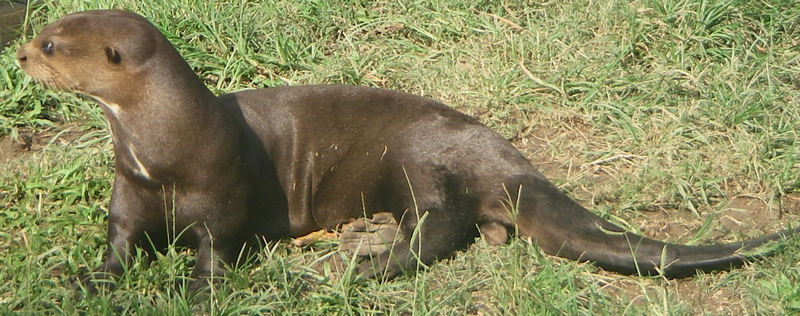|
| Query: mammal | Result: 850th of 3457 | |
giant otter (Pteronura brasiliensis)
| Subject: | giant otter (Pteronura brasiliensis)
| | Poster: | Wiki Photos (---@---.---)
| |

| Resolution: 1613x638
File Size: 308775 Bytes
Date: 2006:10:24 15:31:30
Camera: PENTAX Optio W10 (PENTAX Corporation)
F number: f/4.0
Exposure: 1/200 sec
Focal Length: 189/10
Upload Date: 2017:01:31 00:46:09
|
Photograph by Renaud d'Avout d'Auerstaedt (http://renaud.davout.org/), registered wikipedian (rdavout). Date taken: 2006-10-24. Place taken: Venezuela - Estado Federal - Caracas - Parque del Este.
Español: Ejemplar de nutria gigante en Venezuela.
Description: Giant Otter (Pteronura brasiliensis) in Venezuela. Keywords: otter; giant otter.
Source: https://en.wikipedia.org/wiki/File:Giantotter.jpg
The giant otter or giant river otter (Pteronura brasiliensis) is a South American carnivorous mammal. Pteronura brasiliensis is the longest member of the Mustelidae, or weasel family, a globally successful group of predators, reaching up to 1.7 m. Atypical of mustelids, the giant otter is a social species, with family groups typically supporting three to eight members. The groups are centered on a dominant breeding pair and are extremely cohesive and cooperative. Although generally peaceful, Pteronura brasiliensis is territorial, and aggression has been observed between groups. The giant otters are diurnal, being active exclusively during daylight hours. It is the noisiest otter species, and distinct vocalizations have been documented that indicate alarm, aggressiveness, and reassurance. Order: Carnivora, Family: Mustelidae, Subfamily: Lutrinae. |
^o^
Animal Pictures Archive for smart phones
^o^
|
|

